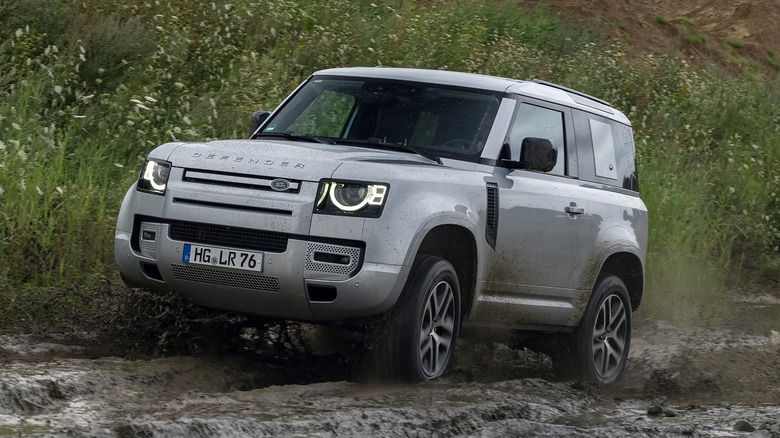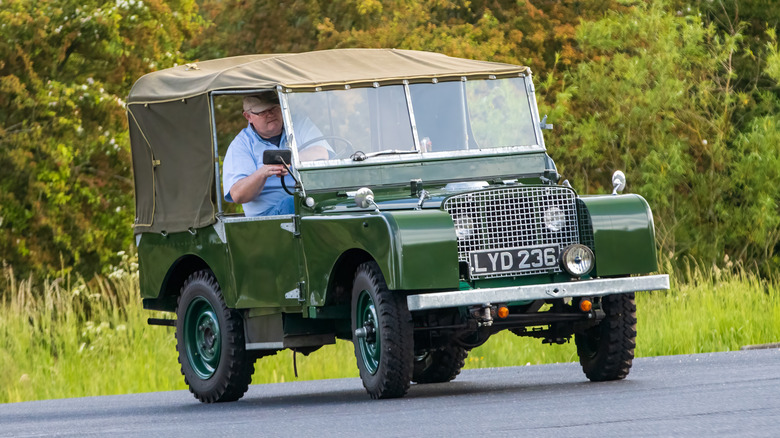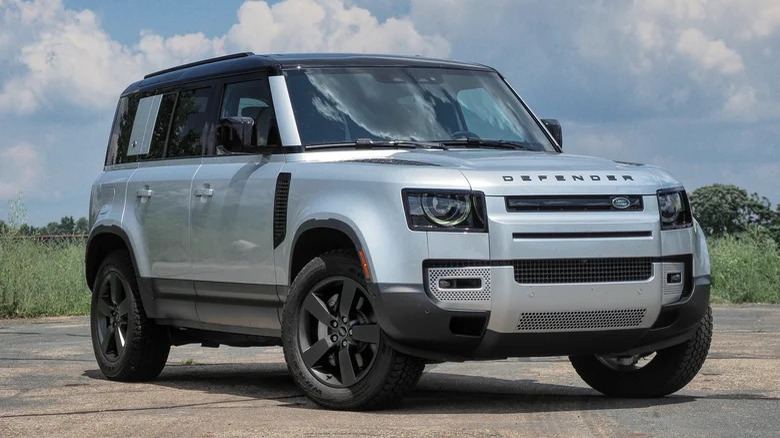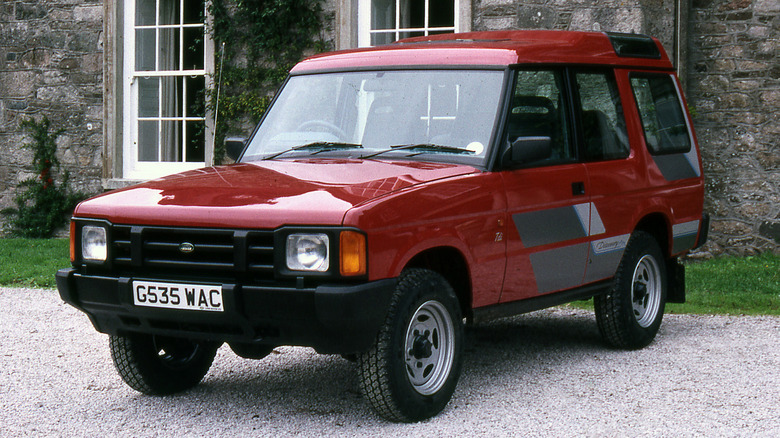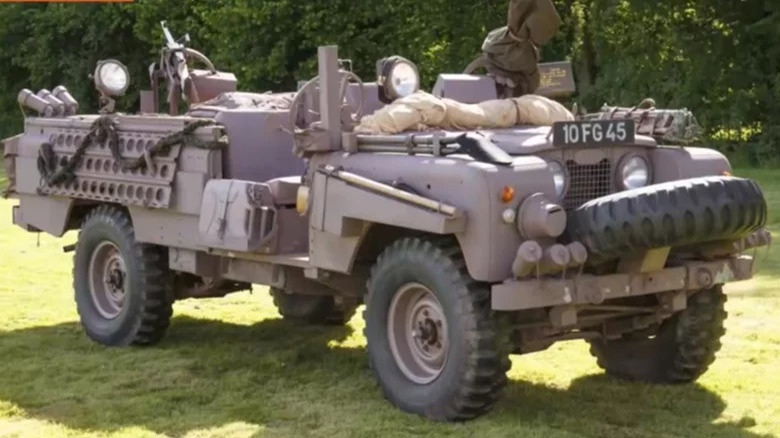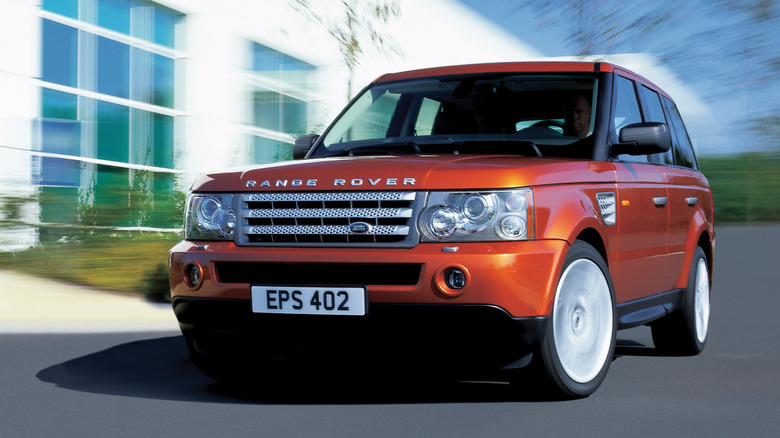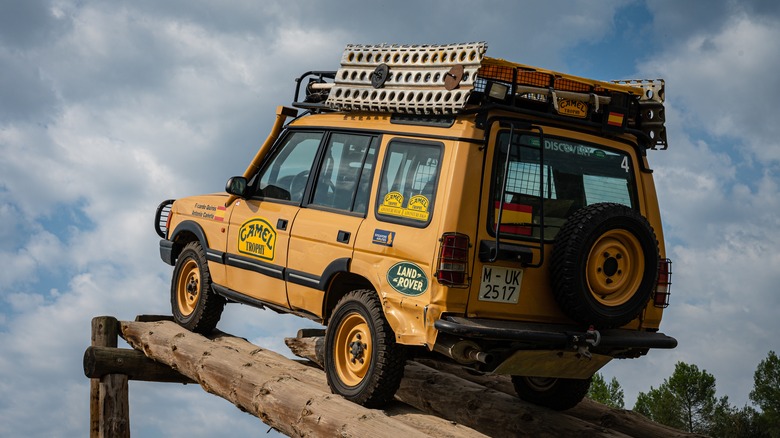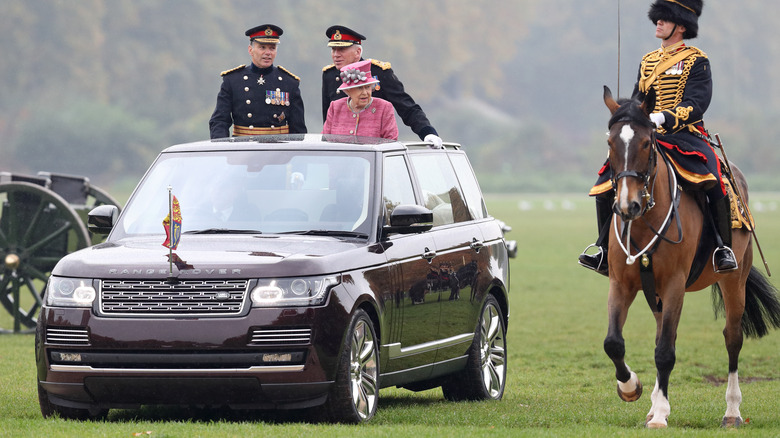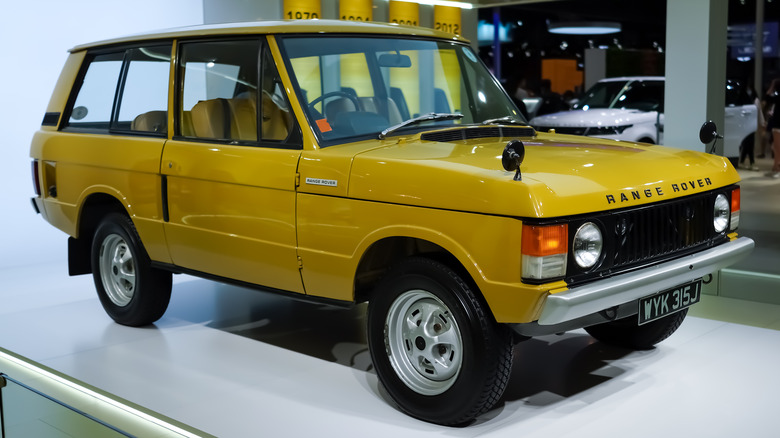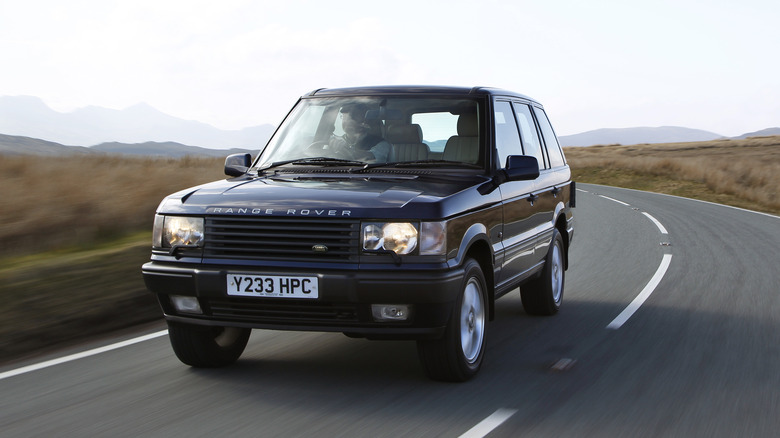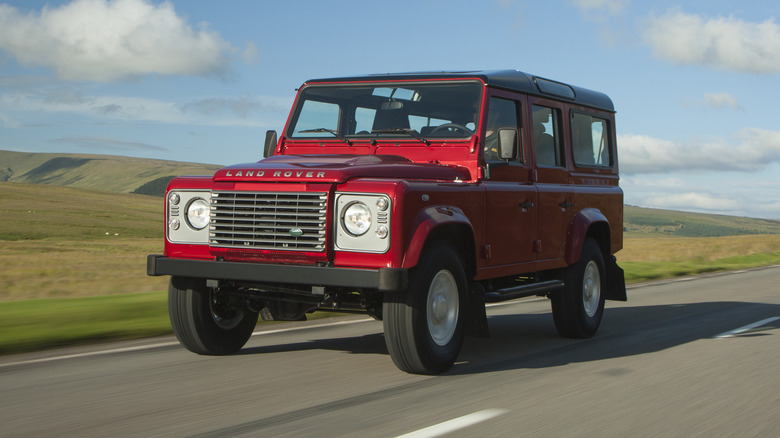The 10 Most Iconic Land Rover Models Ever Produced
With the exception of Jeep, there is perhaps no brand that is more closely associated with its 4x4 roots than Land Rover. The original Land Rover was designed in the '40s as an all-terrain vehicle for farmers and rural workers, but few could have predicted at the time that the badge would one day spawn an entire line of vehicles spanning from everyday workhorses to luxury SUV limousines.
Land Rover's core appeal has always been its go-anywhere capabilities, but especially in recent years, its focus on luxury has become equally key to its allure. It was reported in April 2023 that certain Land Rover models have a waiting list as long as two years, and the orders keep pouring in. However, that popularity would never have been achieved were it not for the successes of models from decades past. In no particular order, these are the brand's greatest models that have shaped its trajectory into the renowned 4x4 manufacturer it is today.
Land Rover Series I
The story goes that the original Land Rover was first conceived as a sketch in the sand on a beach in Wales, when Rover designer Maurice Wilks was trying to come up with a vehicle that could be used in the most remote parts of the country. The production car debuted a year after Wilks' initial idea, launching to great fanfare at the Amsterdam Motor Show in 1948. It proved to be an immediate sales success, with farmers and landowners snapping up the new car.
The Series I was a world away from any modern Land Rover — it was, at heart, an agricultural vehicle, and so its on-road handling was considered to be largely irrelevant. It wasn't fast, and it wasn't refined, but it could reliably take on terrain that no other vehicle on the market could at the time. The original design was modified and improved over the decades, but the basic blueprint remained largely the same right up until the retirement of the Defender in 2016.
Land Rover Defender (L663)
To say that the new Land Rover Defender had big shoes to fill would be an understatement — the original has become one of the most iconic British cars ever made and cultivated an enthusiastic fan base all over the globe. However, tightening safety and emissions regulations had seen it forced out of most key markets for Land Rover, and so an all-new successor was needed to keep up with the competition. The new Defender 90 debuted for the 2020 model year, with the larger Defender 110 and Defender 130 following in due course.
Land Rover has managed to pull off a very tricky balancing act with the latest generation of the SUV. It has overhauled every part of the car to compete against increasingly luxurious off-road rivals, but without losing too much of the boxy charm that made it such a hit in the first place. It might not satisfy the purists — leaving that job to the Ineos Grenadier – but it opens the Defender up to a much wider audience. Some of that audience will appreciate its improved off-road capabilities, and some will likely only ever use the car for the school or grocery run. It might not be the rough-and-ready farmer's favorite it once was, but there's no doubt that the latest Defender will play a key role in shaping Land Rover's fortunes for the foreseeable future.
Land Rover Discovery Series I
First introduced in 1989, the Discovery was designed to offer a middle ground between the brand's two existing models. The Defender was a very utilitarian vehicle and not well suited for anyone looking to cover longer distances on the road, and the Range Rover had become a luxury vehicle that was more upmarket (and therefore pricier) than originally intended. The Discovery was based on the Range Rover but featured less of the luxuries, with a focus on appealing to buyers who wanted an off-road capable family hauler.
The Discovery featured five standard seats and an additional two in the rear, which could be folded away when not in use. Although the Disco saw sales success almost immediately when it launched in the UK, it would take another five years for the model to be brought to America. Later generations of the Discovery would be renamed the LR3 and LR4 in the U.S. before Land Rover brought back the Discovery name for 2017.
Land Rover Series 2a Pink Panther
As well as producing civilian vehicles, Land Rover has developed a long line of off-roaders adapted for military use over the decades. Few are more iconic than the "Pink Panther," which was based on the Land Rover Series 2a and commissioned by the British Army's elite SAS division. The reason for its unusual coloring is that Army researchers found that pink was excellent at blending in with the desert landscapes of Oman, where the vehicles were deployed. The Land Rovers were designed to replace the Army's fleet of Jeeps, which were over 20 years old by the time the Pink Panthers were developed in 1968.
The pink paint was far from the only upgrade the Pink Panthers boasted. They were also rigged to carry all the equipment needed to survive the harsh conditions of the desert, and deal with enemy units if need be. A wide variety of guns could be carried within the vehicle, and there were also two grenade launchers mounted to the vehicle for good measure. Very few examples of the Pink Panther are known to have survived to the present day, making it an extremely rare piece of Land Rover history.
Land Rover Range Rover Sport
The first of what would turn out to be a series of Range Rover sub-models, the first-generation Range Rover Sport offered a higher level of luxury and performance than buyers could expect from a Discovery, but at a slightly more attainable price than the full-fat Range Rover. It targeted an emerging market segment, the luxury sports SUV, one that has turned out to be a very lucrative segment for JLR. Its chief rivals were the Porsche Cayenne and BMW X5, but over time, the field of competitors has grown hugely.
Even among this increased competition, the Range Rover Sport managed to carve out a niche as a luxury, athletic SUV that still had better off-road capabilities than most other SUVs in the segment. However, its main appeal was always its road handling and performance, especially with the supercharged 5.0L V8 under the hood. The launch of the Sport was ultimately a gamble for Land Rover, but one that's paid dividends, as the line continues to be popular nearly two decades after it was first unveiled.
Land Rover Discovery Camel Trophy
The Camel Trophy was, at one time, one of the most prestigious off-road events in the world, labeled the "Olympics of 4x4." Each year, a different location was held for the grueling race, which saw participants cover long distances across the most hostile terrain. The sole vehicle supplier for the Trophy was Land Rover, and of those Camel Trophy cars, the Discovery is perhaps the most iconic of all. It was the longest-serving Camel Trophy vehicle, making a total of eight appearances between 1990 and 1997.
The Camel Trophy Discovery underwent a thorough conversion at the hands of Land Rover's Special Vehicles division before being shipped off for the race. Among other things, each one was fitted with a roll cage, winch, snorkel, and racks to carry the equipment needed for the crew to survive the distance. Plenty of Discovery vehicles didn't make it to the end, but those that did are highly sought after today. One original example sold for more than $97,000 at auction in June 2023.
Land Rover Range Rover State Review
Another of Land Rover's most famous associations is with the British Royal family, with Queen Elizabeth II often being seen behind the wheel of one over her 70 years on the throne. Land Rover has held Royal Warrants since 1951, producing a line of official state vehicles for various members of the family. The last one to be produced at the behest of Elizabeth II was the Range Rover State Review, an open-top limousine variant of the car with space for the Queen to stand and wave at her subjects.
It features a hybrid powertrain, allowing it to run silently on all-electric power for limited periods of time. It debuted in 2015, replacing the previous State Review Range Rover, which had been in use since 2002. With the passing of Elizabeth II in 2022, it remains to be seen whether the new King Charles III will continue to use his mother's official Range Rover or commission a new one. So far, it has not been used in any of Charles' Royal engagements since the Queen's death.
Land Rover Range Rover Classic
The original luxury British off-roader, the Range Rover was in a class of its own when it debuted in 1970. Designed to offer a more upmarket alternative to the standard Land Rover, the first-generation car was still quite a way off the levels of luxury that modern versions of the car offer. It was, after all, still a working person's vehicle, and that meant an interior with rubber mats that could be hosed clean, and a plastic dash to resist bumps and scrapes. However, as demand for the car grew, more luxurious finishes were added throughout the years after its initial launch.
The biggest appeal of the Range Rover was that, despite its fancy interior, it was still a very capable off-road vehicle. Almost as capable, in fact, as the standard Land Rover. That made it extremely versatile — for wealthy landowners, it was a car that they could be seen driving around the nicest parts of London, but that was just at home in a muddy field. Over the decades, the Range Rover has lost much of its all-terrain capability, but make no mistake: the original car was a real go-anywhere vehicle, a 4x4 dressed up as a luxury vehicle rather than the other way around.
Land Rover Range Rover P38A
The original incarnation of the Range Rover remained on sale for nearly two and a half decades, and so when the second generation was finally launched, expectations were high. The P38A, as it came to be known, lived up to those expectations, moving the car further upmarket while still delivering a high level of all-terrain capability. Much like the original, the P38A was a very versatile vehicle, just as happy in the city as it was traversing a rutted countryside track.
It used a clever air suspension system and a variety of electronic aids to help it remain comfortable no matter what was underneath the wheels. However, those cutting-edge systems were not always reliable, and as any owner of an old Range Rover will know all too well, fixing them when they go wrong can be very costly. Nonetheless, when in working order, the P38A is a remarkably advanced vehicle for its age and a fitting successor to the original Range Rover.
Land Rover Defender
The Defender was officially launched in 1990, uniting the Ninety and One-Ten models of the '80s under one nameplate. The Ninety and One-Ten were themselves evolutions of the Series III, keeping much of the basic design unchanged. It's this continuity that made the model such a hit with buyers — while many rivals were beginning to cater to families or push their 4x4s upmarket in a bid for higher profit margins, the Defender made no such compromises. After all, Land Rover already had the Discovery and Range Rover to cater to that crowd.
The Defender always remained a back-to-basics off-roader, but that made it both reliable and easy to fix in case anything did go wrong. It lagged behind the pack on safety features, emissions, and refinement, but that was entirely the point for buyers. It was an all-terrain workhorse with few, if any, competitors, especially by the time the last Defender rolled off the production line in 2016. It was replaced by an all-new generation in 2020, but the unique appeal of the original means that well-sorted examples still command big premiums on the used market.
